When it comes to constructing a new home, many of us want to reduce our carbon footprint and have as little impact on the environment as much as we can.
By building with sustainably sourced materials and utilising sustainable design principles, you can build harmoniously with nature and add value to your home.
There’s a variety of sustainable building materials to choose from if you want to go down this path. In this guide, we’ll cover both ancient and modern options for you to explore so that you can build a more sustainable home for the future.
Building materials have to fulfil a number of criteria set by each state or territory’s government before they can be classed as sustainable, including that these materials are:1
In short, it must have a minimal impact on the environment throughout its lifecycle.
For most of human history, these sustainable house materials have been used to construct homes and continue to be an option for new builds today.
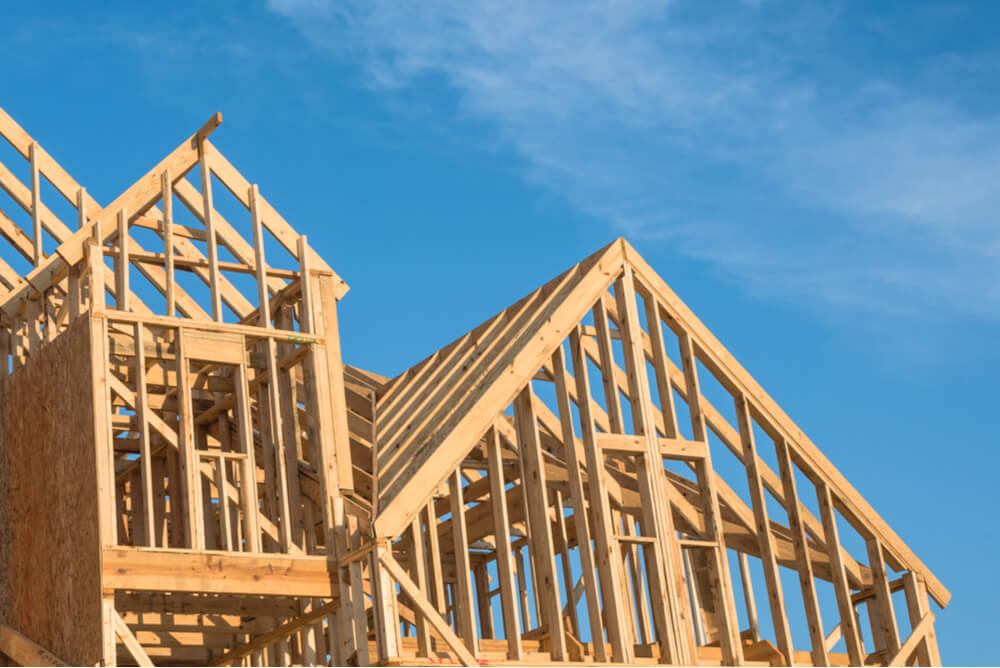
Timber is a renewable resource and can be readily sourced from sustainably managed forests and plantations. It’s light and easy to work with for builders and requires minimal specialist equipment beyond standard carpentry tools. It also has a very low environmental impact when it comes to the energy used to turn it into a usable material (known as embodied energy).2
The major drawbacks are that it deteriorates over time if not carefully maintained by staining, oiling or painting (which takes time, effort and money).3 Additionally, Sustainability Victoria notes that most weatherboard homes built before 1990 don’t have insulated walls, meaning they can get very cold in winter and hot in summer.4 Of course, you can add insulation to a timber home when renovating or if you’re building a new home; it’s easy to include insulation during construction.
Timber is also susceptible to termites, which chew through wood and can cause significant damage to your home without treatment. You can manage this risk by regularly monitoring any timber for holes, bubbled paint or rippled wall linings and reporting any suspected termites immediately.5
| Pros | Cons |
|
|
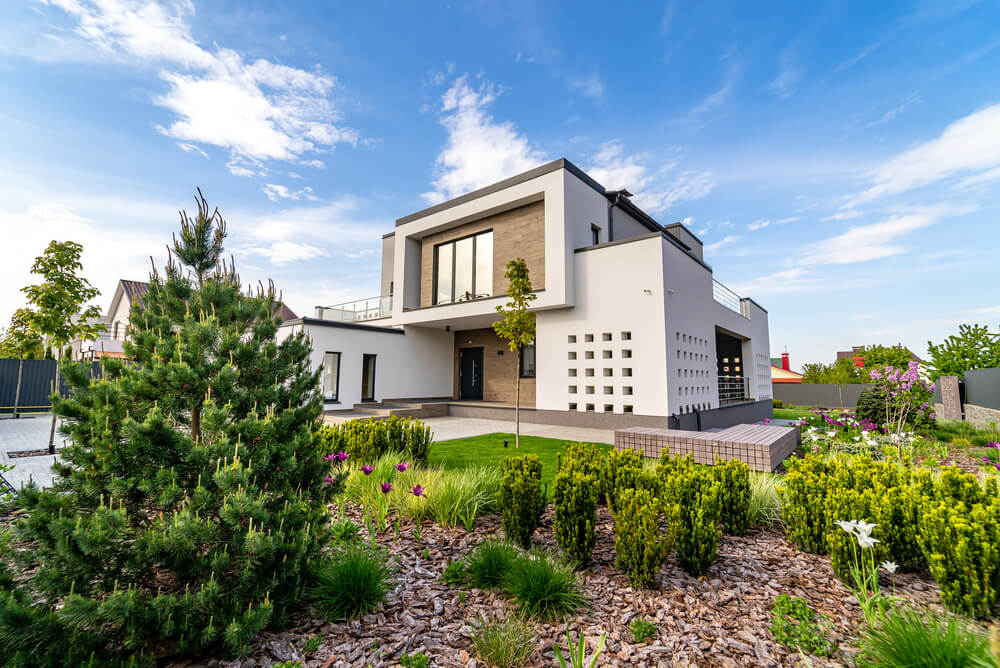
Bricks come from a non-renewable source, as clay is dug out of large pits and fired into bricks, while the components for concrete bricks are also mined in various ways. However, they are reusable; should a building be demolished, the bricks can be cleaned and reused as new building material or paving.
The longevity of brick buildings is much greater than timber. While there are some issues with the thermal properties of brick veneer buildings in summer, double brick buildings have excellent insulating properties during winter.6
It’s worth considering roof tiles such as terracotta, clay or even slate (cut stone) as slate is heavy, relatively fragile and often imported. Clay tiles have a considerable amount of energy involved in their creation and may have plastics mixed in; look for locally-made tiles with fewer plastic components or recycled roof tiles.
Old tiles and bricks can also be repurposed; you could make pathways, garden features (e.g., fire pits, garden bed edging) and craft projects that can add a fun touch to your home.
| Pros | Cons |
|
|
|
|
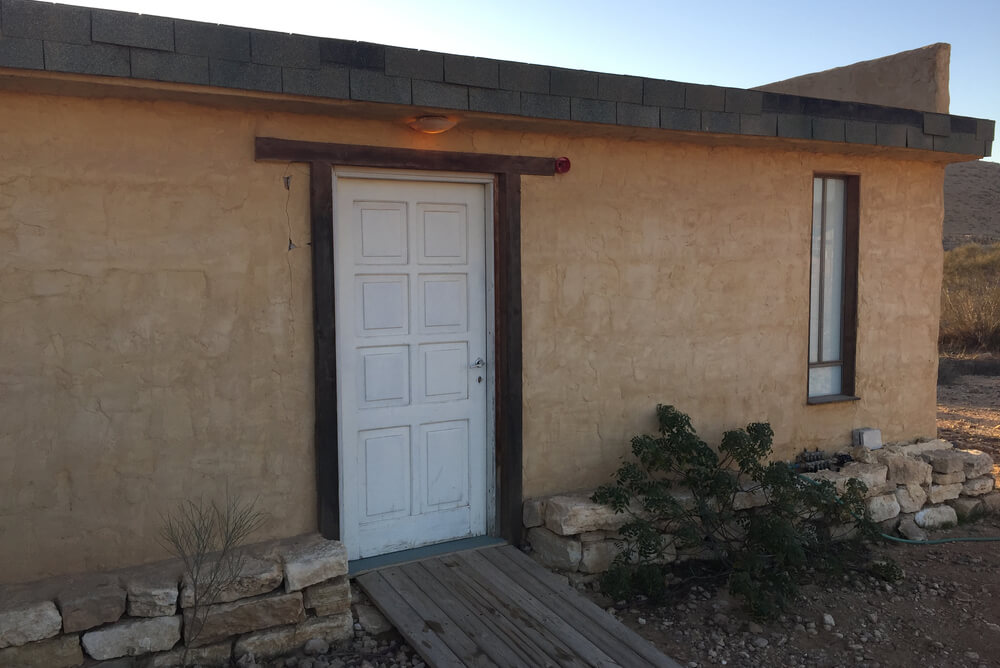
A classic sustainable building material that’s been around for thousands of years, mud bricks are generally constructed onsite using available soil. This style of home is also known as ‘adobe’ in some parts of the world.
The low energy inputs for material transport and construction make mud bricks an attractive option for those wanting a sustainable building material, as they’re formed and dried using only natural energy from the sun and wind.
However, mud brick and earth walls have a more complicated building approval process; the Building Code of Australia is undergoing an update and the current version no longer mentions earth wall construction. The South Australian Government encourages anyone interested in using mud brick to contact a structural engineer or expert builder for advice.7
| Pros | Cons |
|
|
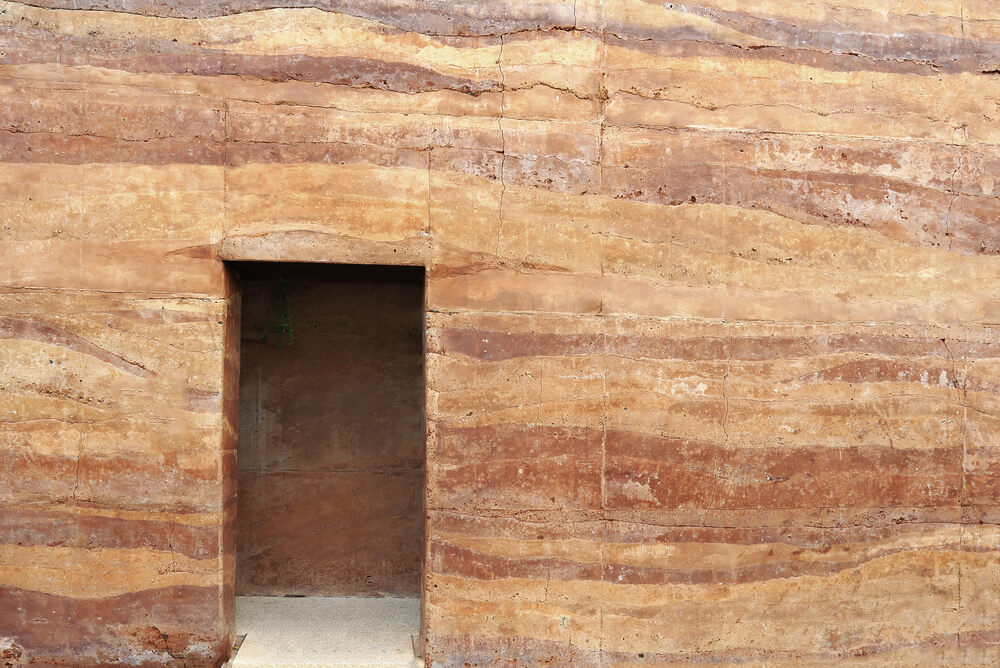
A variation on mud bricks, rammed earth uses onsite soil mixed with gravel, silt and sand that is poured into a wooden or metal temporary frame (the ‘formwork’) and pounded into solid walls. Once set, the formwork can be taken away.
It does, however, need to also consist of cement (5-10% of the mixture) in a process known as cement stabilisation to make the walls sturdy and more capable of bearing weight.8
Another type of rammed earth construction is known as cob construction. It uses straw and other natural materials such as soil, gravel and sand, but no formwork frame. The use of straw helps improve insulation, but there is need to coat the walls in lime and water (known as whitewashing) to protect them from heat, cold and moisture.9
| Pros | Cons |
|
|
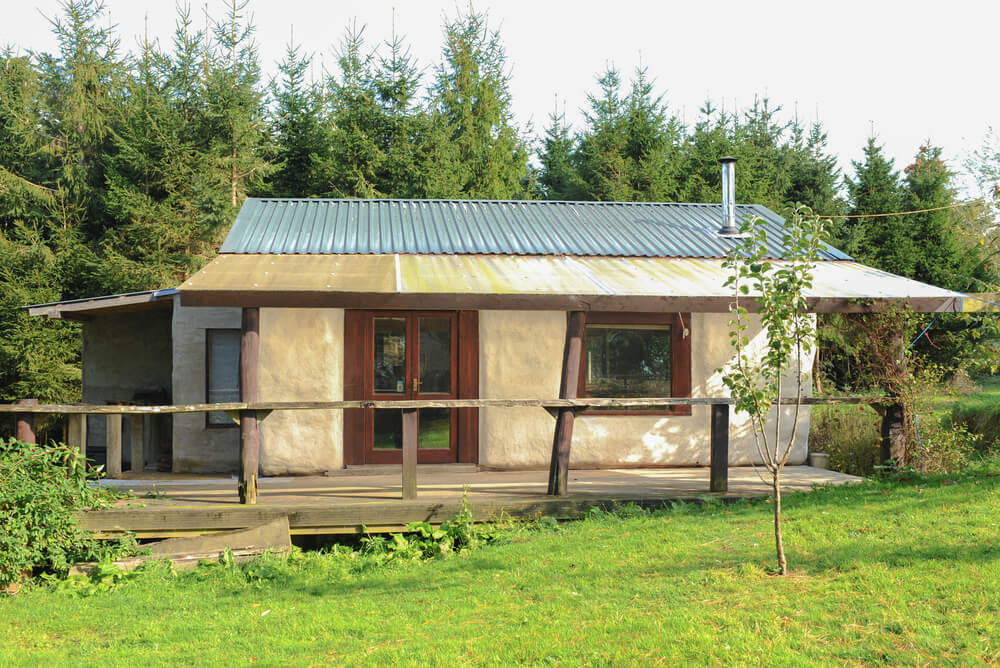
Like the name says, straw bale construction uses bales of hay or giant, straw-like bricks to build walls. The walls are then covered with a render to prevent moisture from entering and rotting away the straw. This also stops potential fire hazards and keeps vermin out of the straw where they could otherwise nest and cause structural integrity problems.
Straw bale buildings generally have good thermal insulation. In fact, straw bales are one of the most cost-efficient methods of insulating your home.10 They also have low embodied energy and manufacturing uses less than 1/50 of the energy need for one tonne of concrete.
One key downside is the plaster that protects the straw can crack and will need to be maintained to prevent mildew, pest damage and ensure the home is resistant to fire.
| Pros | Cons |
|
|
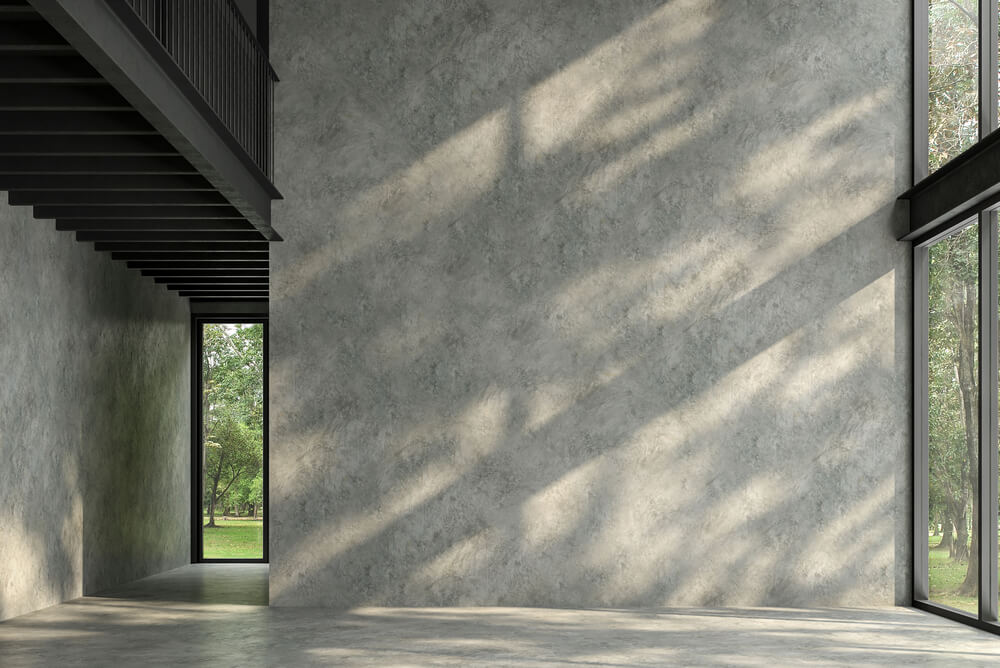
The increasing use of steel and concrete in construction is primarily for economic reasons, since these materials can be purchased in bulk and used on any project of pretty much any size.
The most common way to use these materials is by pouring concrete around steel reinforcing mesh in a frame, then attaching the formed walls to a steel framework. This may be done onsite, or prefabricated concrete panels can be transported from a manufacturing plant.
Precast concrete blocks are also an option if you want to expend less energy on the construction site. While their embodied energy is relatively high compared to other sustainable building materials, you can choose to have the blocks made from recycled aggregate and steel. This keeps waste products from being sent to a landfill and makes the material eco-friendlier.11 Despite this, concrete is still very energy-intensive to produce and contributes to the creation of greenhouse gas emissions more than some other sustainable materials.
However, concrete is good at retaining heat from daylight. While this will be good in winter and cool nights, it can be an issue if you have a concrete floor exposed to the sun in summer. Sustainability Victoria recommends using concrete floors in homes that are north-facing. This orientation naturally reduces the harsh impact of the summer sun while keeping the house well-lit and warm in winter.12
Steel and concrete are also commonly used for roofing, with concrete tiles and metal sheet roofing being popular choices. Metal roofing is less environmentally friendly than clay tiles, but not by a lot. This is because the thin size of the metal compared to thicker clay tiles means you need less material to cover the same amount of area.
| Pros | Cons |
|
|
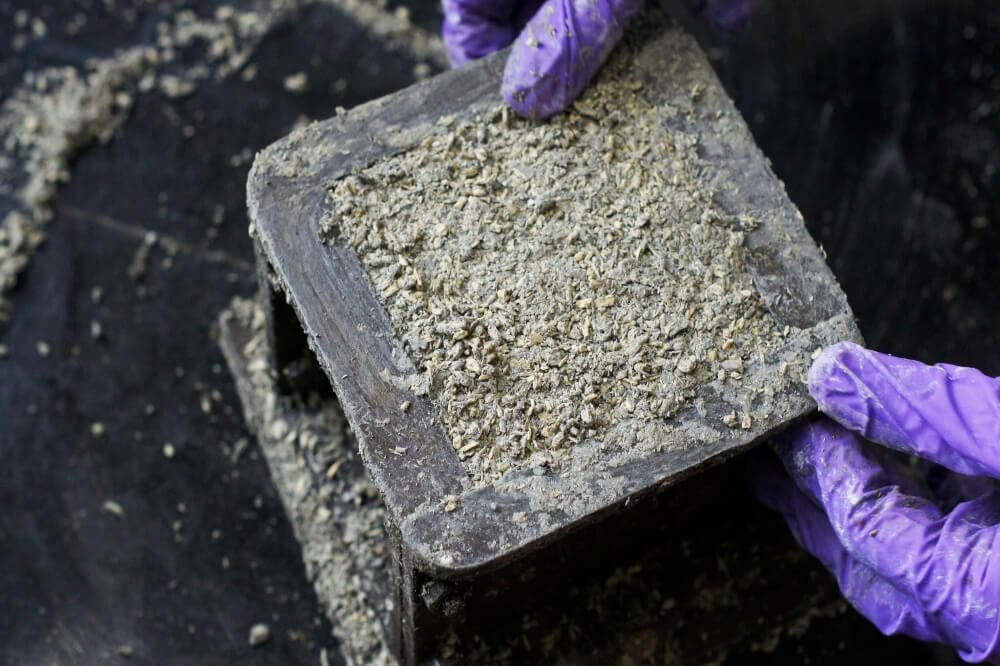
Similar to regular concrete, hempcrete (also known as hemp masonry and hemp-lime composite) is a more economical and environmentally friendly alternative. It’s made by combining the centre wood part of hemp stems with water, lime binder and occasionally sand. While hempcrete has a history dating back least three centuries, it didn’t become a more commonly-used building material until the 1980s. 13
The move towards hempcrete as a building material is based on its minimal environmental impact, and the combination of being a natural insulator with high breathability. Hemp fibre crops require only a third of the water needed for crops like lucerne (hay), and as a natural resource it’s fast-growing, so it can potentially have multiple harvests in a single year.
It also has a more pleasant aesthetic than concrete, taking on a warm golden honey colour. Its breathability and ability to regulate its humidity allows moisture in the air to pass through the walls instead of becoming condensation. In addition, the material is naturally resistant to mould growth, fire and potential pests.
However, it’s a heavier material and requires a timber frame, which acts as the weight-bearing frame allowing hempcrete to be built around it. Hempcrete also is at risk of cracking if built too thin, so all walls should be thick and solid. It’s not often used for roofing due to the heavy weight of the material; however, in recent years, a lighter weight version is increasingly being used for roof insulation.
| Pros | Cons |
|
|
As Australia grows more environmentally conscious, there are a number of new and emerging sustainable building materials and an increasing demand of less common ones.
Numerous specific building products are available, including specially-designed materials that behave like brick or concrete but have enhanced thermal insulation properties. They include materials manufactured using wood waste, plastic waste, recycled glass bottles, polystyrene or even aerated concrete, manufactured using various industrial processes. This gives new life to many old materials that would otherwise be sent to landfill.
There is also a growing interest in new materials such as mycelium, a thread-like fungi structure. Mycelium is an extremely sustainable and eco-friendly source of material that is biodegradable, has high density and is low in cost to produce.14
The sustainability of these building materials varies, so each material should be considered individually. However, choosing a material with good insulation may save you on electricity later if your home requires less heating or cooling.
It’s also worth noting that the type of material you use can affect the value of your home, which in turn affects the cost of your home and contents insurance.
Whether you go entirely modern, solely traditional or a mix in-between, the type of construction materials you use can affect both the premium and coverage of your home insurance. This is based on the cost of the materials used, the potential repair or rebuilding costs and the sturdiness and weather resistance of the structure.
Learn more about what affects the cost of home and contents insurance here.
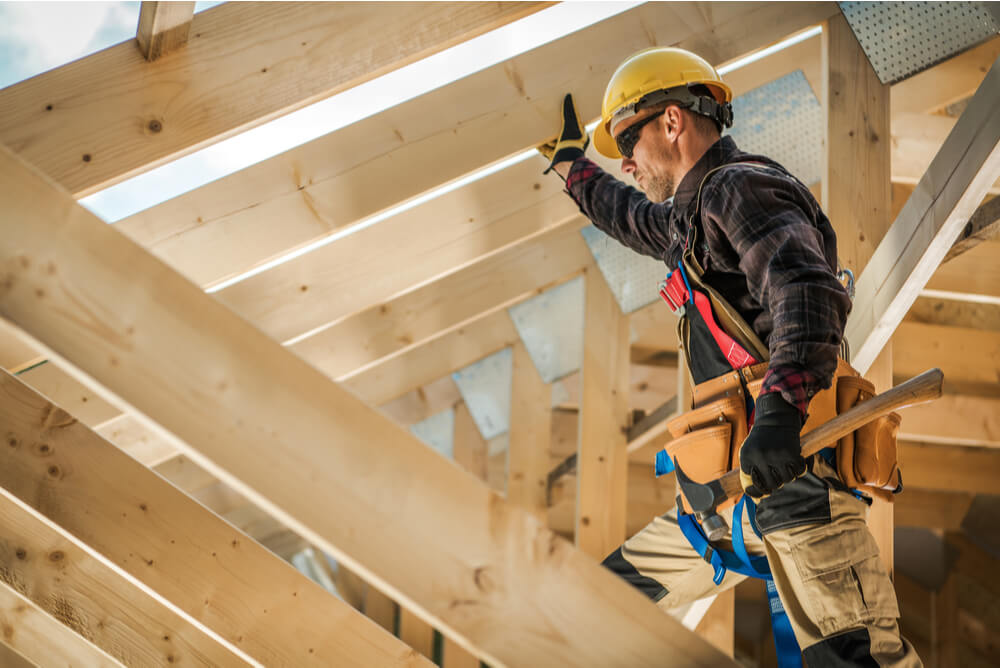
Deciding which building material you want to use will essentially boil down to three factors:
Besides the construction materials, there are many other ways to ensure your home is as environmentally friendly as possible. Such additions can also reduce your energy bills, after some initial investment on your part.
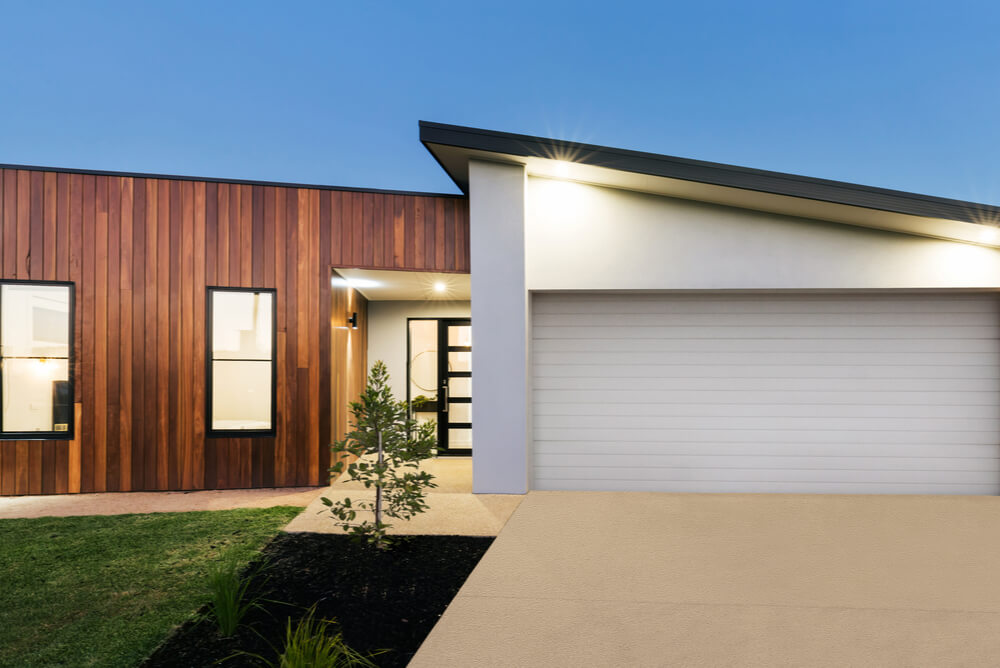
In Australia, our summers can be sweltering hot, especially if you can’t escape the sun. Before you start building, taking the seasons into account can help alleviate some of the burden electricity has on heating or cooling your house. The city council of Joondalup in Western Australia notes that there are a range of building design choices that can help keep your home at a comfortable temperature year-round:
Your location within Australia can make a difference too, based on the angle of the sun and general temperature experienced across the four seasons. Also, you might have natural breezes that you can take advantage of.16
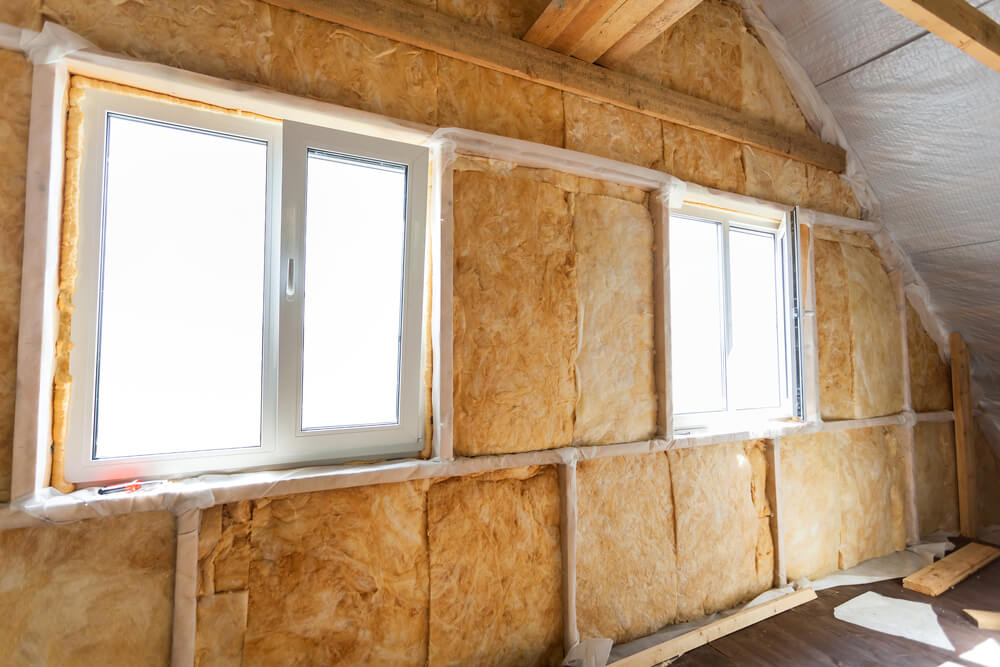
Good insulation is crucial for anyone wanting to limit their energy consumption to heat or cool their home. Insulation provides a barrier that keeps heat from escaping your house in winter, and from entering in summer. It works best when combined with a design that promotes passive heating and cooling.
Choosing an insulation material that is eco-friendly can help reduce your energy carbon footprint. Common materials that generally use recycled content are:
In fact, rockwool and cellulose are usually made from at least 75% recycled materials. Cellulose may also include sustainable fibres such as hemp, straw, cotton and wool. Other insulators such as sheep’s wool, cork and bamboo are natural materials that can be used for wall, floor and ceiling insulation and generally have good thermal mass and low toxicity.3
Before deciding on an insulation type, consider both the R value (insulation level) of the material and your local climate.18 Not all insulation materials are suited to humid or dry climates, so be sure to choose one that will be effective in your environment.
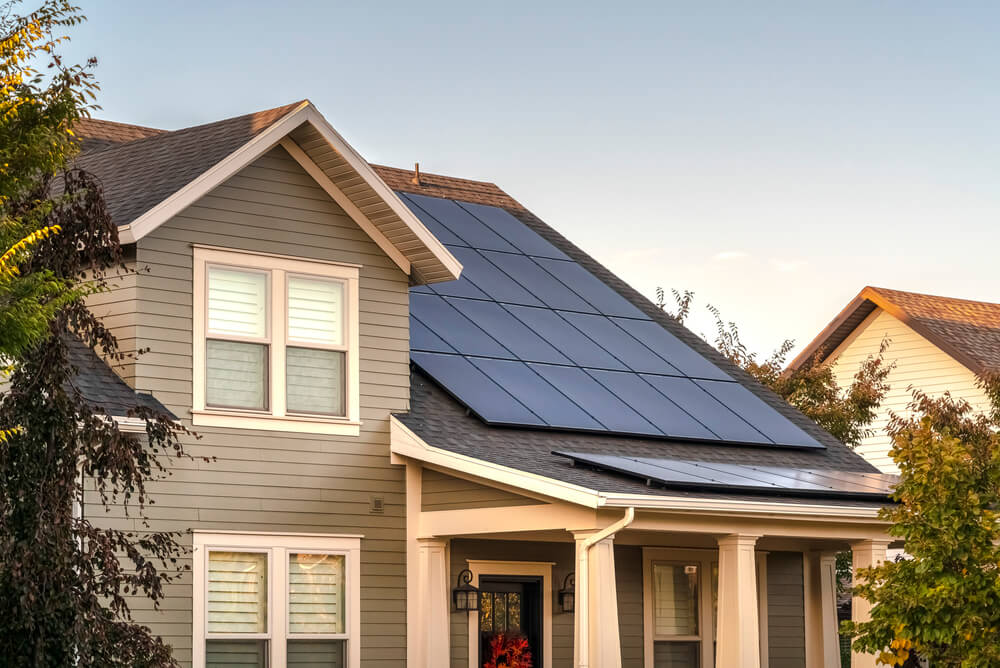
Photovoltaic (PV) solar panels and batteries or solar hot water systems can significantly reduce reliance on non-renewable energy sources. The initial outlay for solar panels may be relatively high, but solar systems will pay for themselves over time. A good solar hot water system can save energy by heating water when the sun is available and storing it in a battery pack for later use.
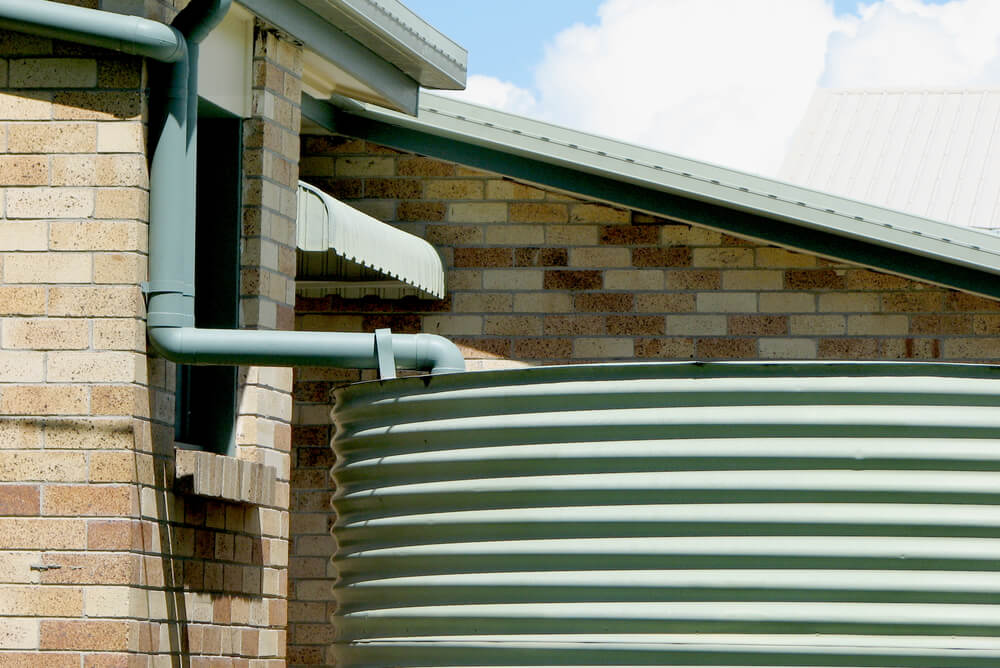
Harvesting rainwater can be beneficial, especially if you use it to water a vegetable garden. It can save you some expense in the long term, reduce your reliance on the water supplied by the city and provide a backup water source during emergencies.
There are various sizes and options to choose from, but there are some common maintenance tips as noted by the Brisbane City Council:
Water storage does have drawbacks: All water catchment needs to be accounted for.
For example, stormwater drains are calculated to operate with a certain flow-through of water each year, with a particular peak flow that cleans them out once in a while.20 If water is taken out of the system before it reaches the storm drains, cleaning them out may mean someone has to get in there and do it.
In some cases, water companies will continue to charge fees for this service even if you don’t buy your water from them. It’s worth checking into with water supply companies and city councils in your local area.
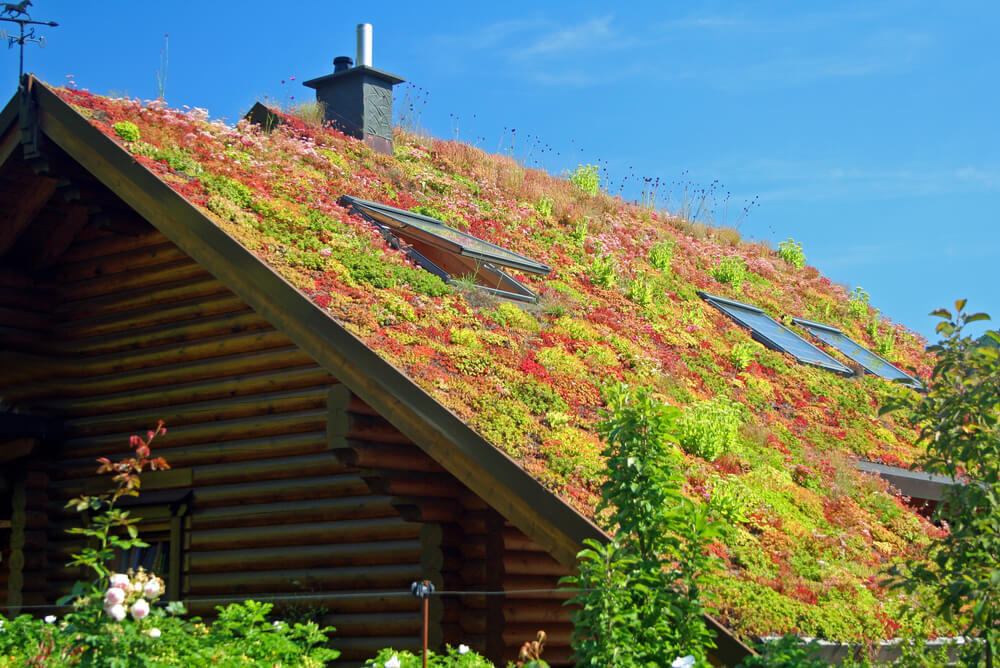
Green walls and roofs refer to gardens covering the roofs and walls of your building. The New South Wales Department of Planning, Industry and Environment notes that green walls have a range of benefits, including:
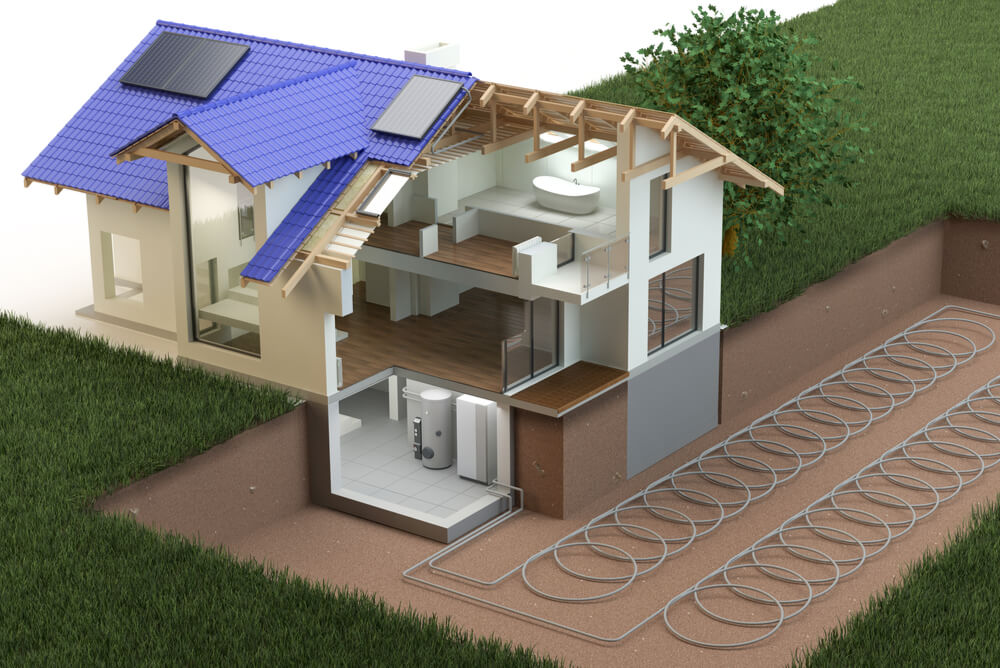
Also known as ground source heat pumps, geothermal heat pumps offer a more environmentally friendly heating option that reduces energy usage, making the home more sustainable. Geothermal heat pumps work by harnessing heat from underground through pipes connected to the pump, that then draws heat up from below the earth’s surface.22
Geothermal heat pumps can also help cool the home by capturing colder temperatures under the ground during hot days.
While they do cost more to install than other heating and cooling systems, geothermal heat pumps can help reduce electricity usage and have lower ongoing maintenance costs.
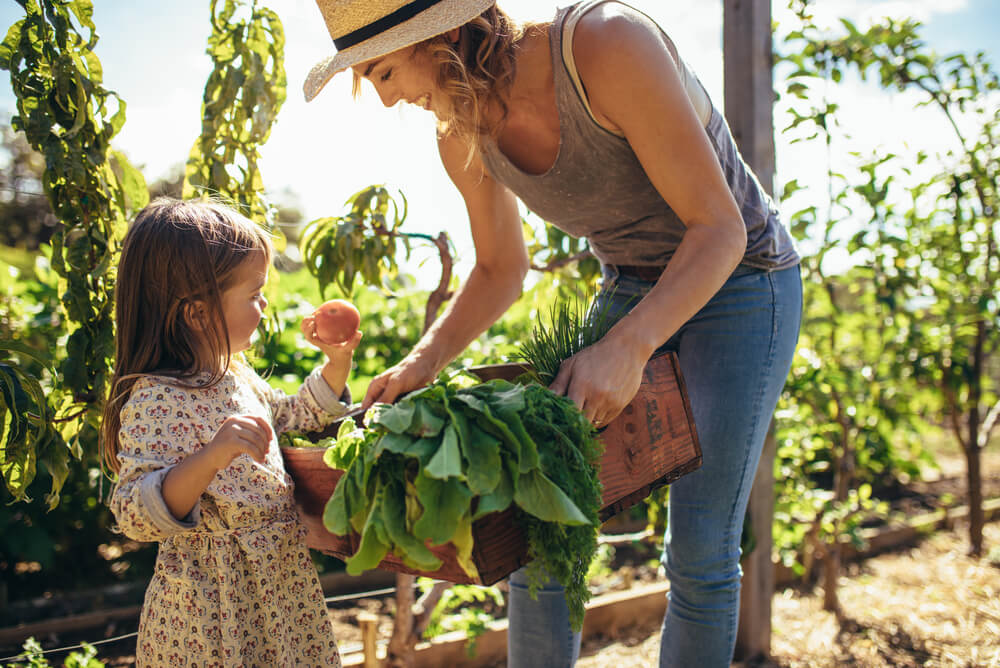
Growing your own vegetables at home can further improve your home’s sustainability if you have a ‘green thumb’ and love to garden (or even if you don’t!). You put the soil to use and become more self-reliant, meaning you don’t need to buy as much food from the supermarket.
Not only does this help save you money, but growing your own veggies can help reduce your family’s impact on the environment. This is because there is a lot of long-distance shipping involved in supplying supermarkets with fresh produce, which involves fossil fuels.
The construction industry is constantly evolving, especially with the looming long-term effects of climate change, so similar to renewable energy, new construction technology is always in production. When trying to source sustainable building materials for new buildings or retrofitting old ones, the key is to keep asking questions. If you’re serious about sustainability, always find out where your materials come from, how they’re produced, how long they’ll last and what happens to them when they need to be replaced.
Perhaps most importantly, find a qualified builder you trust who is open to your feedback, just as you are open to theirs. Sometimes what appears to be a more expensive option in the short term becomes a better investment down the track.
One of the big motivating factors for sustainable construction in today’s market is judiciously approaching energy use. Part of this process is to select an energy retailer with competitive prices, so rather than sticking with a known entity or default retailer, shop around and look at the finer detail of what’s available.
Need a place to start your search? Compare energy retailers with us today for free. You can weigh up usage and supply charges, tariff types, discounts and more, all in one place.
1 Environmentally sustainable Building Materials – Selection. Department of Planning, Transport and Infrastructure, Government of South Australia. 2017. Accessed May 2022.
2 Environmentally Sustainable Building Materials – Selection. Department of Planning, Transport and Infrastructure, Government of South Australia. 2017. Accessed May 2022
3 Chapter 6: Materials. U.S. Department of Energy, Government of the United States of America. 2013. Accessed May 2022
4 Insulate weatherboard walls. Sustainability Victoria, Victorian Government. Last updated Dec 2021. Accessed May 2022.
5 Termites. Queensland Government. Last reviewed April 2020. Accessed May 2022.
6 Renovate a double-brick house for energy efficiency. Sustainability Victoria, Victorian Government. Last updated December 2021. Accessed May 2022.
7 Earth wall construction issues. South Australian Government. Last updated March 2021. Accessed May 2022.
8 Earth Building. Earth Building Association of Australia. 2022. Accessed May 2022.
9 Mudbrick. Your Home – Department of Industry, Science, Energy and Resources. Australian Government. Last updated 2020. Accessed May 2022.
10 Straw bale. Your Home – Department of Industry, Science, Energy and Resources. Australian Government. Last updated 2020. Accessed May 2022.
11 Pre-cast concrete. 2013. Your Home, Department of Industry, Science, Energy and Resources. Australian Government. Accessed May 2022.
12 Renovate an estate-style house for energy efficiency. Sustainability Victoria, Victorian Government. Last updated Dec 2021. Accessed May 2021.
13 Hemp masonry. 2020. Your Home – Department of Industry, Science, Energy and Resources. Australian Government. Accessed May 2022.
14 Jones, M, Mautner A, et.al. Engineered mycelium composite construction materials from fungal biorefineries: a critical review. Science direct. 2020. Accessed May 2022.
15 Thing Green Energy: Passive Solar Design. City of Joondalup. 2020. Accessed May 2022.
16 Powering your new house for less – sustainable housing. Department of Mines, Industry Regulation and Safety, Government of Western Australia. 2019. Accessed May 2022.
17 Insulation materials. Energy Saver – US Department of Energy. Accessed May 2022.
18 Insulation. Your Home – Department of Industry, Science, Energy and Resources. Australian Government. Last updated 2020. Accessed May 2022.
19 Using your rainwater tank. Brisbane City council. 2019. Accessed May 2022.
20 Stormwater. Your Home – Department of Industry, Science, Energy and Resources. Australian Government. 2013. Accessed May 2022.
21 Green roofs and walls for nature. NSW Department of Planning, Industry and Environment, New South Wales Government. 2019. Accessed May 2022.
22 Geothermal heat pumps offer a cool change at western Sydney estate. ARENAWIRE, Australian Renewable Energy Agency, Australian Government. 2021. Accessed May 2022.